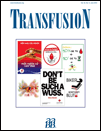
TRANSFUSION
Scope & Guideline
Fostering Collaboration in Hematology Excellence
Introduction
Aims and Scopes
- Clinical Transfusion Practices:
Explores optimal transfusion practices, guidelines, and protocols for various patient populations, including pediatric, obstetric, and trauma patients. - Blood Safety and Pathogen Reduction:
Investigates methods and technologies to ensure the safety of blood products, focusing on pathogen inactivation, screening, and the prevention of transfusion-transmitted infections. - Immunohematology and Alloimmunization:
Examines the immunological aspects of transfusion, including alloimmunization rates, antibody detection, and the management of patients with complex immunological needs. - Innovative Blood Donation Strategies:
Studies recruitment and retention methods for blood donors, including the impact of social media, community engagement, and educational interventions. - Transfusion-Related Adverse Reactions:
Analyzes the incidence, risk factors, and management of adverse reactions associated with blood transfusions, contributing to improved patient safety. - Emerging Technologies in Blood Banking:
Focuses on the application of new technologies, such as automation, artificial intelligence, and genomic sequencing in blood banking and transfusion practices. - Quality Improvement in Transfusion Services:
Addresses methodologies for enhancing the efficiency, safety, and quality of transfusion services through process evaluation and improvement strategies.
Trending and Emerging
- COVID-19 Related Research:
Research exploring the implications of COVID-19 on blood donation, transfusion practices, and convalescent plasma therapy has surged, reflecting the pandemic's impact on health systems. - Personalized Medicine in Transfusion:
An increasing trend towards personalized transfusion practices, including the use of genetic screening and tailored transfusion strategies based on patient-specific factors. - Diversity and Inclusion in Blood Donation:
Growing attention to the recruitment of diverse donor populations and addressing barriers faced by underrepresented groups in blood donation. - Technological Innovations:
A rise in studies focusing on the application of automation, artificial intelligence, and advanced data analytics in blood banking and transfusion processes. - Patient Blood Management (PBM) Strategies:
Emerging discussions around PBM practices that prioritize minimizing transfusions and optimizing patient outcomes through evidence-based approaches. - Mental Health and Donor Experience:
Increasing recognition of the psychological aspects of blood donation, with research aimed at improving donor experience and addressing donor-related anxiety.
Declining or Waning
- Traditional Alloimmunization Studies:
Research focused on classic alloimmunization mechanisms seems to be waning, as newer studies incorporate broader immunological perspectives and advanced genomic techniques. - General Blood Donation Trends:
General studies examining blood donation rates without specific interventions or demographic focus are less common, replaced by more targeted research on underrepresented donor populations. - Standardized Risk Assessment Protocols:
The emphasis on uniform risk assessment protocols for blood donors has diminished, with a shift towards individualized and nuanced approaches to donor eligibility. - Historical Perspectives on Transfusion Medicine:
Less emphasis is being placed on historical analyses of transfusion practices, as the field increasingly focuses on contemporary challenges and innovations.
Similar Journals
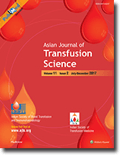
Asian Journal of Transfusion Science
Unlocking knowledge for safer transfusion practices.Asian Journal of Transfusion Science, published by WOLTERS KLUWER MEDKNOW PUBLICATIONS, is a prominent open-access journal dedicated to the interdisciplinary fields of hematology and immunology. With an ISSN of 0973-6247 and E-ISSN 1998-3565, it serves as a crucial platform for researchers, clinicians, and students from around the globe, facilitating the dissemination of high-quality, peer-reviewed research. Established in 2007, the journal has consistently aimed to advance scientific knowledge in transfusion practices, enhancing patient care and safety in transfusion medicine. Despite its recent categorization in the Q4 quartile within both Hematology and Immunology, the journal is making strides toward greater visibility in the academic community, with plans for expanded reach and increased citation impact. With its commitment to open-access publishing, the Asian Journal of Transfusion Science ensures that invaluable research findings are readily accessible to all stakeholders, thereby bolstering collaborative efforts in transfusion science and related disciplines.

Blood Transfusion
Empowering Research in Hematology and Immunology.Blood Transfusion is a leading journal in the fields of Hematology, Immunology, and Medicine, published by SIMTIPRO SRL in Italy. With its ISSN 1723-2007, the journal has established a significant presence in the academic community, as evidenced by its positioning within the Q2 category in Hematology and Medicine (miscellaneous) and Q3 in Immunology and Allergy for 2023. Notably, it ranks #38 out of 137 in the Hematology category, showcasing its impactful contributions to research and practice. Operating under a traditional publishing model, this journal provides valuable insights into advances in blood transfusion science, ultimately aimed at enhancing patient care and outcomes. Spanning from 2003 to 2024, the scope of Blood Transfusion covers a wide range of topics related to hematological and immunological research, making it an essential resource for researchers, healthcare professionals, and students engaged in these critical fields.
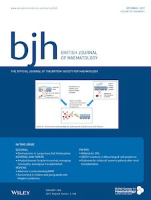
BRITISH JOURNAL OF HAEMATOLOGY
Transforming Hematology Through Rigorous ResearchBritish Journal of Haematology, published by Wiley, is a leading journal in the field of hematology, with an impressive impact factor reflecting its significance in the medical research community. Established in 1955, the journal has consistently contributed to advancing knowledge in hematology, currently holding a prestigious Q1 ranking in the Scopus category of Hematology, placing it in the top 18% of the field. The journal encompasses a broad range of topics including clinical and laboratory aspects of blood disorders and hematological malignancies, making it an essential resource for hematologists, researchers, and healthcare professionals. With its commitment to publishing top-tier research and clinical studies, the British Journal of Haematology plays a critical role in shaping treatment approaches and improving patient outcomes worldwide. Please note that this journal does not offer Open Access options, ensuring that published content is rigorously curated for quality and relevance.
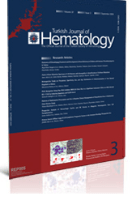
Turkish Journal of Hematology
Championing open access to vital hematology knowledge.Turkish Journal of Hematology is an esteemed publication dedicated to advancing the field of hematology, producing influential research since its inception in 1999 under the auspices of GALENOS PUBL HOUSE. With an Open Access model, it facilitates widespread dissemination of knowledge, allowing researchers, clinicians, and students to stay abreast of the latest developments in blood disorders and treatments. With an ISSN of 1300-7777 and an E-ISSN of 1308-5263, the journal holds a commendable position in the academic community, evidenced by its 2023 Q3 ranking within the hematology category and its standing at #80 out of 137 in the Scopus database, placing it in the 41st percentile. Covering a wide scope of topics within hematology, this journal serves as a critical resource for disseminating innovative research and clinical practices pertinent to the ongoing challenges faced in this vital area of medicine. With its continuous publication until 2024, Turkish Journal of Hematology remains a beacon for enhancing the understanding and treatment of hematological conditions within the Turkish and global medical communities.

Blood Research
Advancing Hematological Science for a Healthier TomorrowBlood Research, published by SPRINGER, is a premier journal dedicated to the multifaceted realm of hematology, serving as a crucial platform for disseminating innovative research findings and advancements in the diagnosis and treatment of blood-related disorders. With an ISSN of 2287-979X and an E-ISSN of 2288-0011, this journal is recognized for its commitment to scholarly excellence and impact in the field, currently holding a reputable Q2 ranking in the Hematology category as per the 2023 metrics. The journal spans from 2013 to 2024, providing a broad archive of quality research that is vital for researchers, healthcare professionals, and students alike. Although it is not an Open Access journal, it offers insightful contributions that enhance the understanding of hematological science, fostering the exchange of knowledge crucial for advancing patient care and clinical practices globally. The journal’s performance is underscored by its Scopus ranking in the 46th percentile, reflecting its significant role in the ongoing discourse in hematology.

Journal of Blood Medicine
Empowering Research: Your Gateway to Innovations in HematologyThe Journal of Blood Medicine, published by DOVE MEDICAL PRESS LTD, stands as a vital resource in the field of hematology, focusing on the latest research developments and clinical advancements in blood medicine. With an impact factor reflective of its growing relevance, this open-access journal has been delivering quality scholarly work since 2010, ensuring that critical research is readily available to the global scientific community. The journal operates under an open-access model, further enhancing its dissemination and accessibility to researchers, professionals, and students alike. In the 2023 rankings, it secured a Q3 category status within hematology and achieved a commendable 76th rank out of 137 in Scopus listings, indicating its commitment to quality and innovation in this specialized area. Located in New Zealand, the journal's diverse topics encompass clinical research, treatment modalities, and emerging therapies, contributing significant insights vital for shaping future advancements in blood medicine.
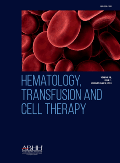
Hematology Transfusion and Cell Therapy
Pioneering insights in hematology and transfusion care.Hematology Transfusion and Cell Therapy, published by Elsevier, is a leading Open Access journal dedicated to advancing the fields of hematology, immunology, and transfusion medicine. Since its establishment in 2018, this journal has provided a vital platform for sharing innovative research and clinical advancements in the management of blood disorders and cellular therapies. Based in Brazil, it attracts a global audience, facilitating access to high-quality research that influences clinical practice and policy. With a current impact factor that places it in the Q3 category for both hematology and immunology as of 2023, the journal is recognized for its rigorous peer-review process and commitment to disseminating significant findings. By featuring a diverse range of articles, from original research to reviews, Hematology Transfusion and Cell Therapy aims to foster collaboration and knowledge sharing among researchers, professionals, and students alike, empowering them to tackle emerging challenges in their fields.
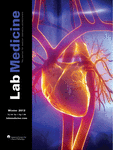
AMERICAN JOURNAL OF CLINICAL PATHOLOGY
Fostering Excellence in Pathology and Clinical PracticeThe American Journal of Clinical Pathology, published by Oxford University Press Inc, stands as a vital resource in the fields of pathology and clinical medicine. With a rich history dating back to 1945 and an impressive impact factor reflected in its Q1 ranking in Pathology and Forensic Medicine, this journal serves as a cornerstone for researchers and professionals seeking to advance their knowledge and practice. Covering a breadth of topics within the discipline, it is recognized in 2023 as ranked #24 out of 208 in its category, highlighting its esteemed reputation within the scientific community. Although the journal does not currently offer open access, its rigorous peer-reviewed articles and cutting-edge research make it an essential addition to any academic or clinical library. The ISSN for print version is 0002-9173, with an E-ISSN of 1943-7722 available for digital access. Researchers, students, and practitioners alike will benefit from its comprehensive scope and commitment to disseminating high-quality scientific inquiry.
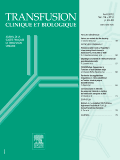
TRANSFUSION CLINIQUE ET BIOLOGIQUE
Advancing transfusion science for better patient outcomes.TRANSFUSION CLINIQUE ET BIOLOGIQUE, an esteemed journal published by Elsevier France - Éditions Scientifiques Médicales Elsevier, has been a pivotal resource in the fields of transfusion medicine, biochemistry, and hematology since its inception in 1994. With a strong commitment to advancing scientific knowledge, this journal provides a platform for high-quality research and clinical studies aimed at improving patient care and outcomes in transfusion practices. Although categorized in Q3 and Q4 quartiles across multiple categories in Biochemistry and Medicine for 2023, the journal holds significant potential for growth and impact within the scientific community. While it currently does not offer open access options, its indexing in reputable databases ensures visibility and reach among professionals and researchers. As the field evolves, TRANSFUSION CLINIQUE ET BIOLOGIQUE aims to continue fostering innovation and collaboration, making it a valuable tool for anyone involved in medical, biochemical, and hematological research.

INTERNATIONAL JOURNAL OF HEMATOLOGY
Unveiling Innovations in HematologyThe INTERNATIONAL JOURNAL OF HEMATOLOGY, published by SPRINGER JAPAN KK, serves as a critical platform for advancing research in the field of hematology. With a prestigious history spanning over three decades from 1991 to 2024, this journal is recognized for its impactful contributions, evidenced by its Q2 category ranking in Hematology for 2023, and its notable position at rank #71 out of 137 in the Scopus Medicine Hematology category. Researchers and professionals within the hematology community benefit from the journal's rigorous peer-reviewed articles that cover a wide range of topics, including clinical studies, basic research, and novel therapeutic strategies. Though currently non-open access, it provides essential insights and findings to an audience passionate about the latest advancements in blood disorders and treatments. Situated in Japan, the journal not only showcases high-quality research but also fosters a global exchange of knowledge in hematology, making it a significant resource for scholars, practitioners, and students alike.